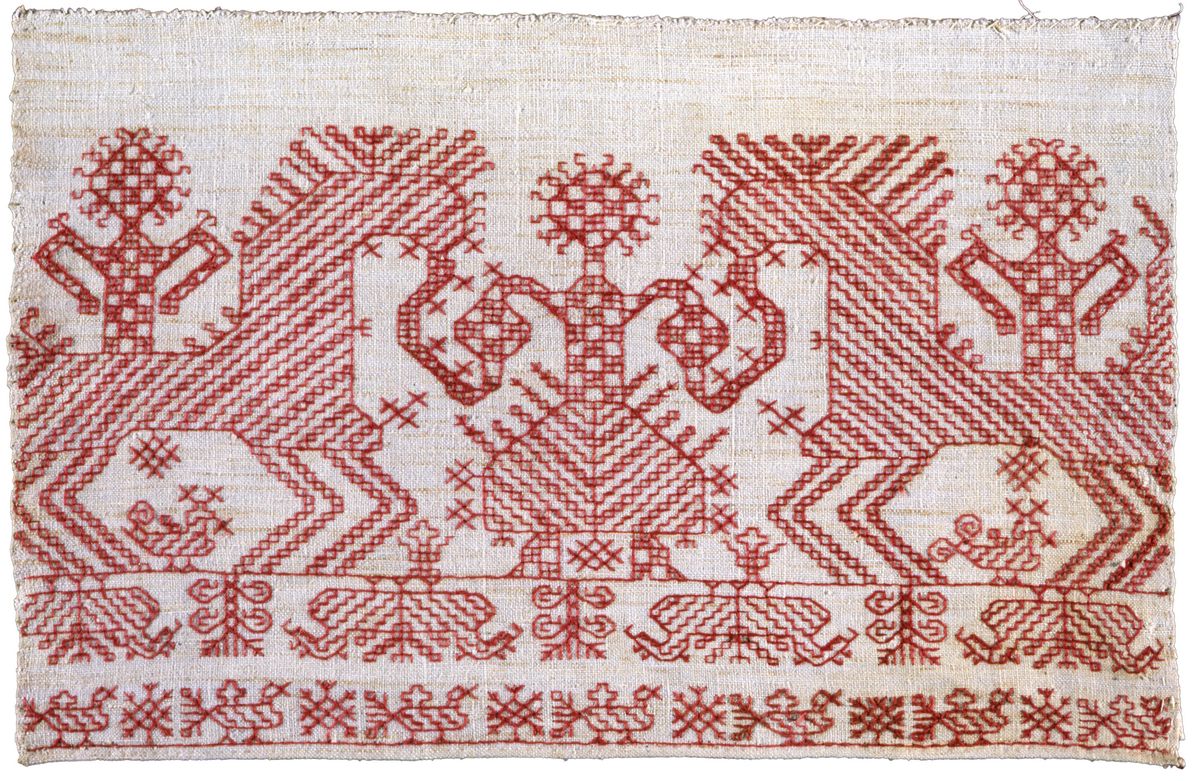


Наиболее древние по иконографии вышивки исполнены одними красными нитями. Красный цвет когда-то имел символический смысл. Композиция в таких вышивках ограничена тремя лаконичными фигурами, главной — в центре и подчиненными ей — по сторонам. Изображения лишены подробностей. Геометризованный рисунок передает самые общие черты человеческой фигуры с ромбической головой, поднятыми руками-крючьями и юбкой-треугольником. Птицы и кони даются всегда в профиль, человеческие фигуры — в фас. Изображения неподвижны, но в них есть скрытая напряженность. Композиции торжественны и монументальны. Образы полны значительности, овеяны поэтическим вымыслом.

According to the iconography the oldest pieces of embroidery are usually made with red threads only. Red colour once had a symbolic meaning. The composition in such embroideries usually consists of three simple figures, the main one located in the centre and the subordinated figured are on its sides. The images are not detailed. The geometric pattern conveys the most general features of a human figure with a rhombic head, raised hands that look like hooks and a triangle skirt. Birds and horses are always depicted in profile, human figures in the front. The images are immovable, but at the same time they have hidden tension inside. The compositions are usually solemn and monumental. The images are full of significance and poetic fiction.



